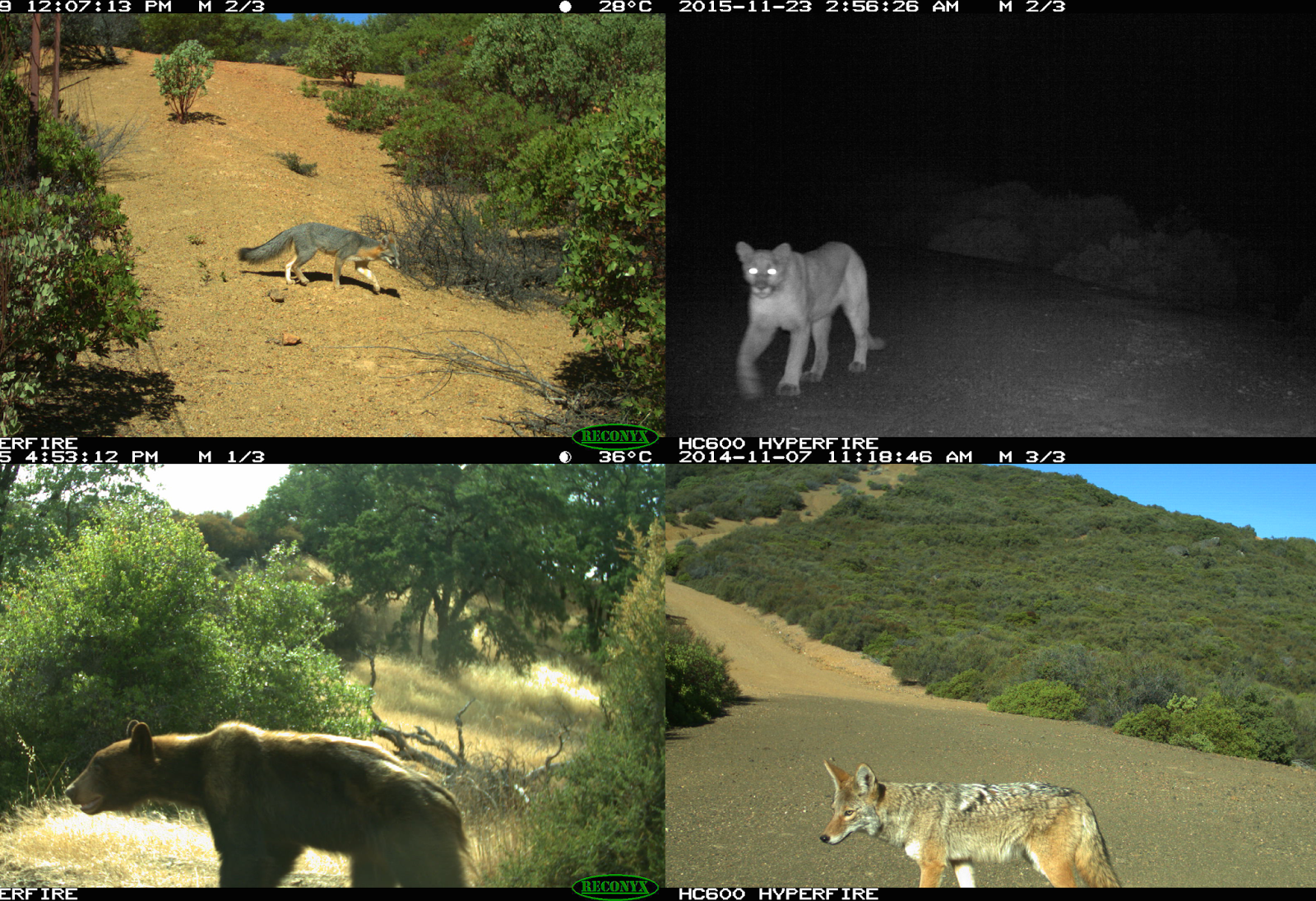
The populations of most carnivore species in California are rising, including these seen on camera traps at the Hopland Research and Extension Center. From top left clockwise: gray fox, puma, coyote, and black bear. Photo credit: Hopland Community Ecology Project.
California, and the broader American West, is undergoing a momentous but under-appreciated revitalization of its ecosystems. The populations of almost every medium and large carnivore species are steadily increasing, and species not seen in nearly 100 years are making their reappearance. Professor Justin Brashares of the University of California, Berkeley discusses why this has come to be and what this means for California’s wildlife and human communities.
What drivers are behind the broad changes we’re seeing in our carnivore communities in the West?
Across North America, we have a historical backdrop of active, government-sanctioned removal of a large and important portion of our wildlife community.
In California, as elsewhere, this involved the concerted persecution and removal of carnivores from our landscapes. This process took off with the Gold Rush in the 1840s, and over the next 130 years just about every carnivore was actively removed, from the California grizzly bear and wolves to bobcats, mountain lions, foxes, badgers, and coyotes. Federal and, later, state bounties incentivized carnivore removal even where risks to livestock or humans were absent.
It didn’t take long before Californians began to see what was thought at that time to be impossible: the extinction of top predators. In 1922 the last golden bear, emblem of the state, was killed in California, and wolves were eradicated very shortly thereafter.
Jumping to the late 1960s and early 70s, we began to see a gradual change in policy that reflected public views on the potential for coexistence with carnivores. This was the beginning of the US environmental movement, and California led the way in setting its own environmental agenda. As part of that movement, Californians passed new initiatives that changed the rules and the incentives around lethal control of wildlife. For example, California banned the use of wildlife bounties in 1974. A couple of decades later, Californians banned the use of poisons and leg-hold traps to capture and kill carnivores and other wildlife. These laws dramatically changed the ways in which landowners or government agencies were able to remove what were considered ‘pest’ or ‘problem’ animals. Four years ago, California banned the use of dogs to hunt bears and mountain lions. And just in the last few months, California’s Fish and Game Commission passed an outright ban on bobcat trapping statewide.
California essentially has shown through the passage of these new laws and regulations that our society is more willing to live with carnivores. And for many if not most North American carnivores, a small amount of tolerance is the only accommodation they need to reestablish and thrive...
Excerpt from Conservation Connections. Read the full interview.
